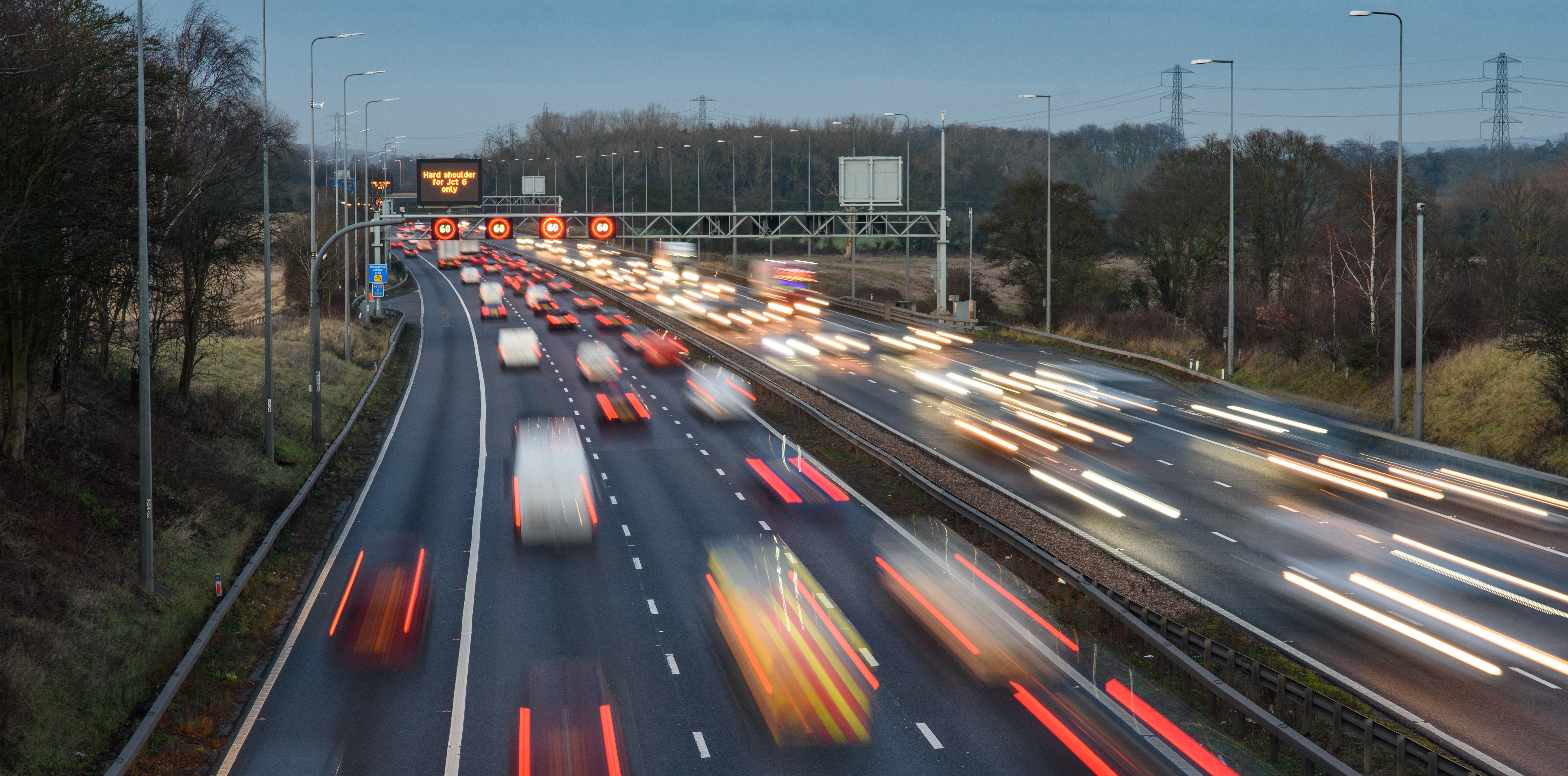Dynamic hard shoulder "too complicated to use"
The boss of England’s strategic roads says some stretches of motorway where the hard shoulder is occasionally opened to traffic can be “too complicated to use”.
Jim O’Sullivan – chief executive of Highways England – said there would be no more sections of road with a so-called dynamic hard shoulder added to the network.
The design is already in use on lengths of the M1, M4, M5, M6, M42 and M62.
Mr O’Sullivan told the Transport Select Committee that there is confusion over when the hard shoulder is and is not open to traffic.
(The full transcript of the session is available here.)
“We get people who stop there when it’s a running lane. What we also find is because people aren’t sure if it’s a hard shoulder or a running lane, even when it is open, the usage of that running lane is much lower because people aren’t sure whether it’s a hard shoulder or not.”
Steve Gooding, director of the RAC Foundation, said:
“The rules, regulations and layouts of roads should be easy to comprehend whether people are driving along them at 70mph or 7mph.
“The simpler motorways are to understand the safer they will be, as motorists concentrate on the hazards ahead rather than grappling with which lanes are available to them and which are not.”
Mr O’Sullivan also defended the safety record of smart motorways which includes not just those sections with a dynamic hard shoulder, but also controlled motorways with variable speed limits and all lane running (ALR) motorways where the hard shoulder has become a permanent running lane.
He said that in 2018, 77 people had died on traditional motorways in England and seven more had died on smart motorways.
The committee heard from Highways England that 38% of breakdowns occur in live lanes rather than on the verges or in the emergency refuges which are spaced anywhere 600m to 1.5 miles apart.
However, there were no figures immediately available for what proportion of breakdowns occur in live lanes on traditional motorways.
Mr O’Sullivan said that stopped vehicle detection systems were now present on 18% of the ALR network though from 2020 all new stretches of all lane running motorways will have it. The M3 will be the first part of the current ALR network without the detection system to be retrofitted. He admitted that the detection system would have prevented a number of deaths, though he pointed out that the so-called MIDAS system can detect slowing traffic and automatically adjust speed limits.
The Highways England boss was critical of drivers who stop on motorways in non-emergency situations such to go to the loo or because their children were car sick. He said 50%-70% of cases people were stopping for non critical reasons.
The committee was told that warning letters had been sent to 130,000 drivers who had ignored the Red X which indicates that a lane is closed on a smart motorway because of a hazard. Highways England expect police enforcement of the Red X to start this autumn.
At the start of the committee hearing Mr O’Sullivan told members that the three biggest issues sitting on his desk were: air quality, Brexit, and the current and next road investment strategies (RIS1 and RIS2).
ENDS
Contacts:
Philip Gomm – Head of External Communications – RAC Foundation
020 7747 3445 | 07711 776448 | [email protected] | 020 7389 0601 (ISDN)
Notes to editors:
The RAC Foundation is a transport policy and research organisation that explores the economic, mobility, safety and environmental issues relating to roads and their users. The Foundation publishes independent and authoritative research with which it promotes informed debate and advocates policy in the interest of the responsible motorist.
The RAC Foundation is a registered charity, number 1002705.


